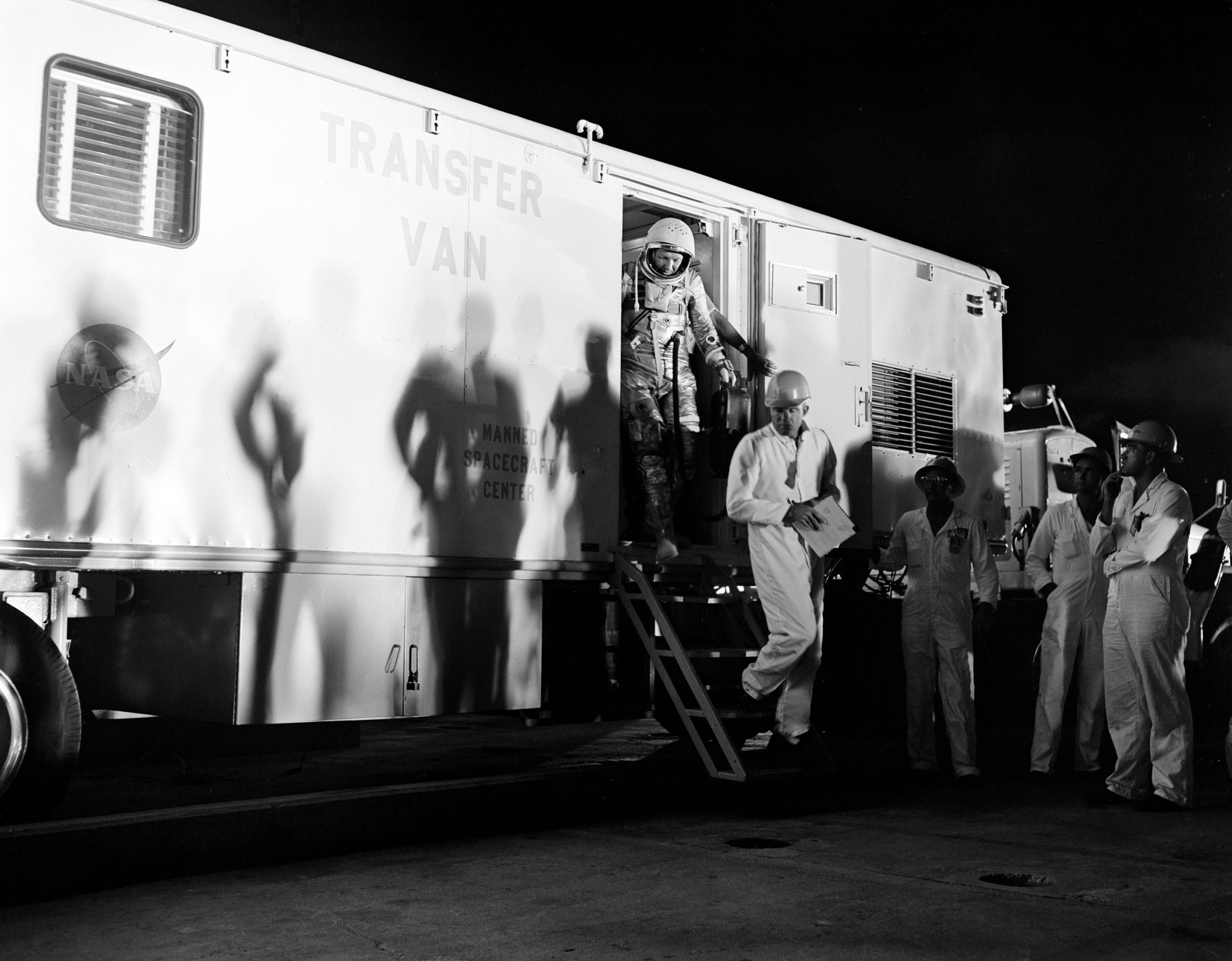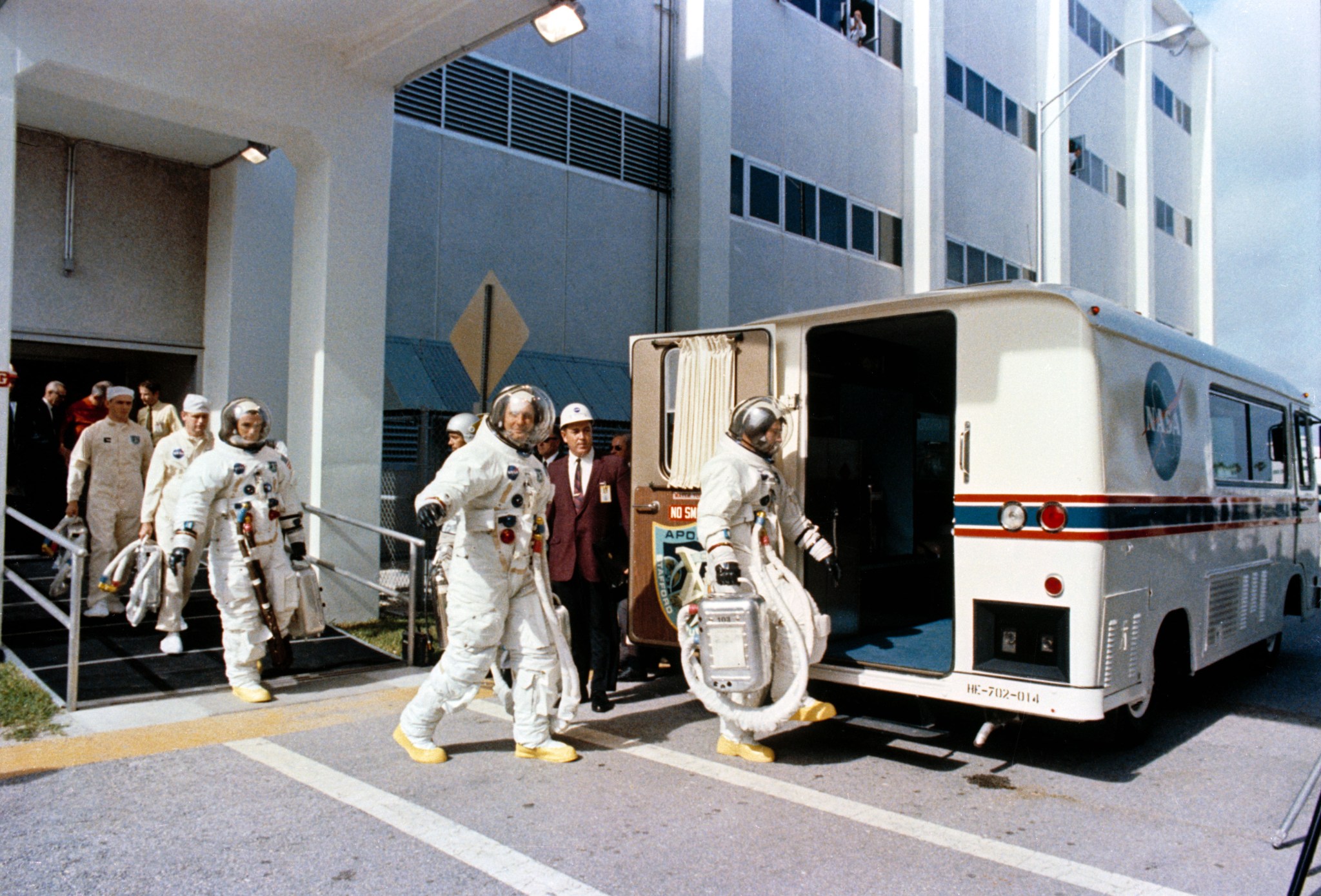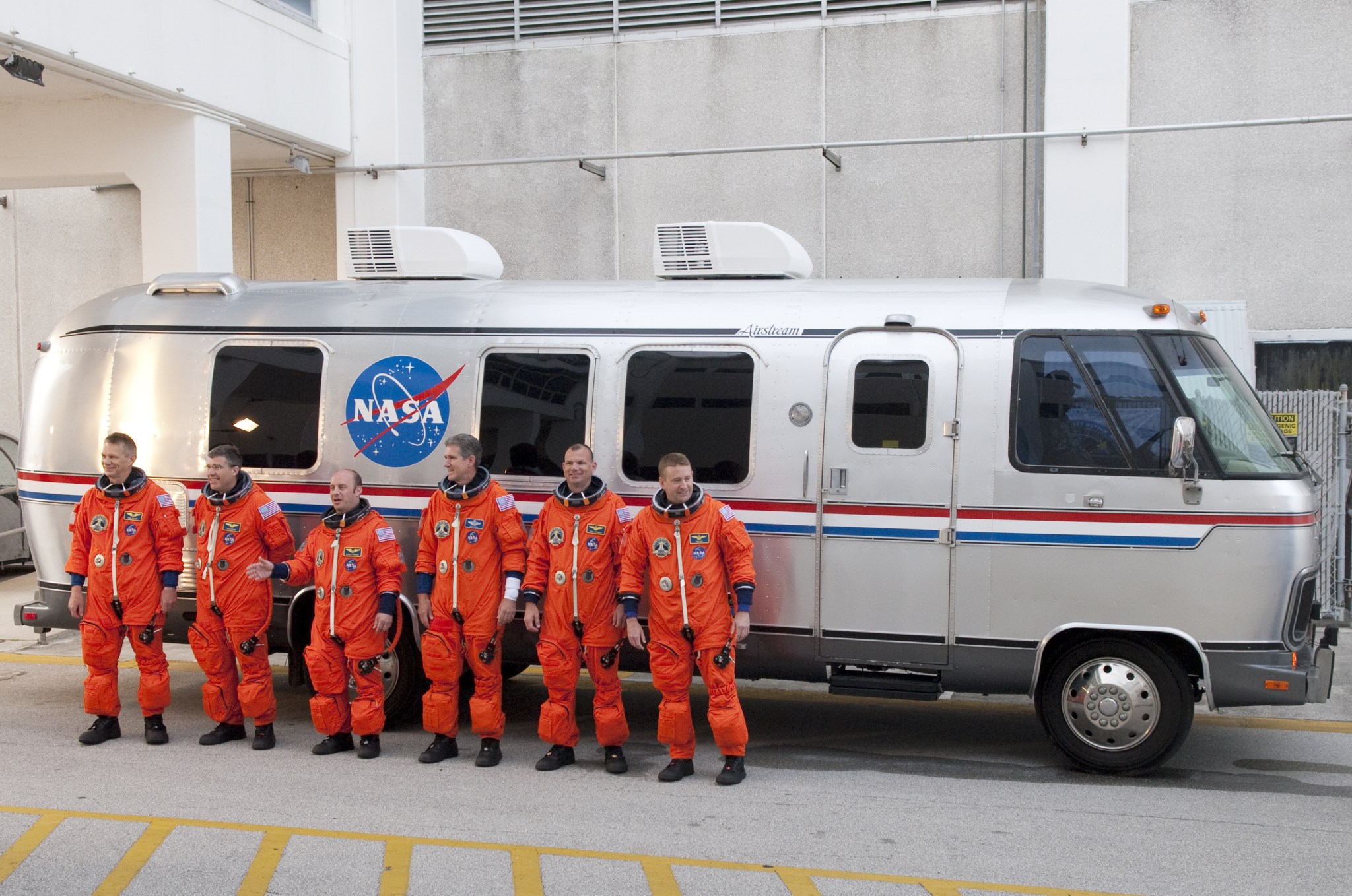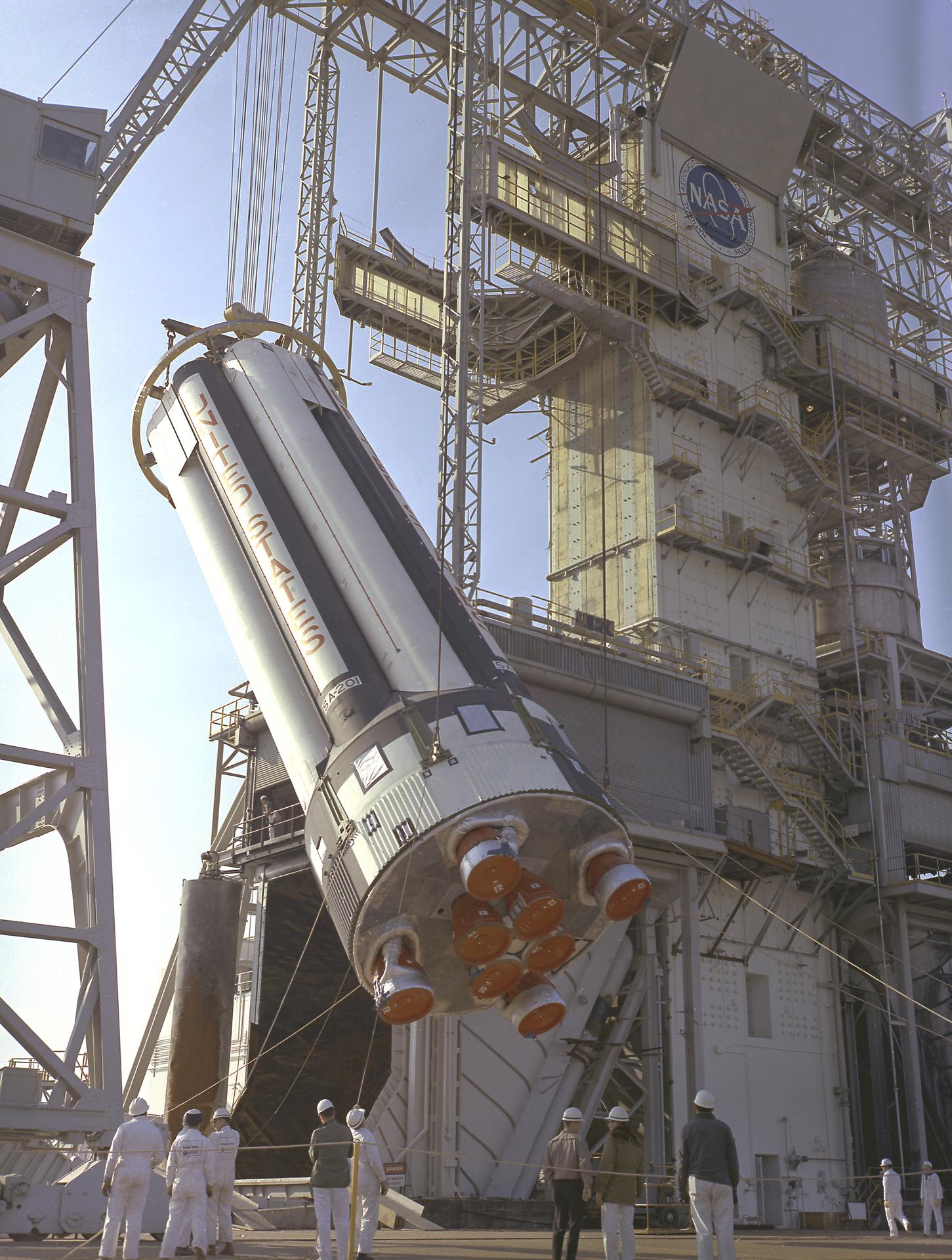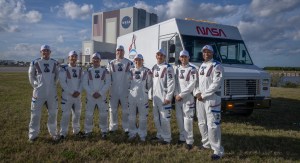This article appeared in the Aug. 6, 2010 issue of Spaceport News.
By Kay Grinter
NASA’s John F. Kennedy Space Center
As astronauts’ rides to space has evolved, so too has their ride to the launch pads.
In the 1960s, Mercury astronauts traveled from their crew quarters in Hangar S on Cape Canaveral Air Force Station to the launch pads inside a transfer van pulled by a Reo tractor. Although the tractor had five forward gears, only four were used, and the highest speed reached was 20 mph. Faster speeds along the Cape’s less-than-perfect roads would have resulted in a pretty rough ride.
The big van also had a relatively light load. Only the astronaut was seated in the van and the support personnel stood up during the trip to the pad. The driver communicated with the passengers by intercom to tell them when they were approaching a curve or turn.
Gordon Cooper’s ride to Launch Complex 14 on May 15, 1963, took 16 minutes.
His chauffeur, C. J. LaMar, drove either the primary or backup van for all Mercury launches. Along with driving primate astronauts Ham and Enos to the pad, LaMar piloted the backup van, which would have been used in case of a breakdown of the primary van, for the launches of Alan Shepard, Gus Grissom and John Glenn, and delivered Scott Carpenter, Walter Schirra and Cooper to the pad for their flights.
Not once was there motor failure, a flat tire or any other mechanical trouble en route.
Since 1984, space shuttle crews have traveled from their crew quarters in the Operations and Checkout Building on Kennedy Space Center to the Launch Complex 39 pads in a modified Airstream motor home, known as the Astrovan.
The silver van is used to transport astronauts on three occasions only: from crew quarters to the launch pad for launch dress rehearsal and on launch day, and from the Shuttle Landing Facility to crew quarters after landing.
The history-filled, somewhat dated, van was slated to be replaced until word came that the rookie astronauts wanted to keep the original van, steeped in tradition by those who had traveled to the pads before them.
Dark blue upholstered benches line the interior’s narrow center aisle. The seats are equipped with lift-out sections to accommodate the ventilator units used to circulate cool air through the astronauts’ orange launch-and-entry suits. Gold drapes frame the windows, and dark wood paneling lines the walls.
On launch day, the van is the centerpiece of a motorcade escorted by security personnel to the pad. The driver is in constant communication with the NASA test director via radio.
Mark Smith, the manager of Mobile Cranes for United Space Alliance, is responsible for the upkeep and operation of the Astrovan.




























